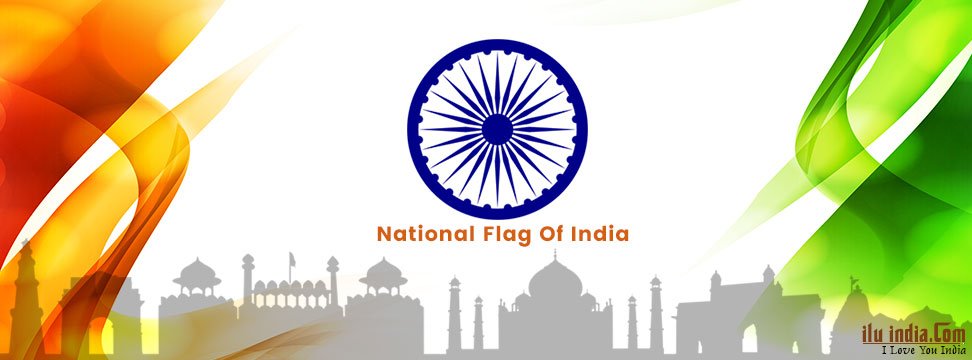
History of the Indian National Flag
An Unforgettable Heritage: The History of Indian National Flag
History of the Indian National Flag: The Tiranga (तिरंगा), The National Flag of India has been in commission through the Constitution of India since 26th January 1950. The flag consists of 3 coloured bands horizontally, namely Saffron, White and Green from the top, with the White band consisting of an Ashoka Chakra in the middle. Prior to the formation of the constitution, there were many flags, mostly unofficial, used for representing Indian territory, we are going to talk about them in this article.
Although, the tricolour has been the National flag of India since independence, the flags have evolved with time to reach the present state:-
An Unforgettable Heritage: The History of Indian National Flag
1.

In 1906, during the Swadeshi and Boycott struggle, a flag of India was hoisted for the first time in the Parsee Bagan Square in Calcutta (present-day Kolkata).
The Vande Mataram flag, part of the nationalist Swadeshi movement, comprised Indian religious symbols represented in western heraldic fashion as it had drawn inspiration from the tricolour flags of the west. The tricolour flag included eight white lotuses on the upper green band representing the eight provinces, a sun and a crescent on the bottom red band, and the Vande Mataram slogan in Hindi on the central yellow band. The flag was launched in Calcutta bereft of any ceremony and the launch was only briefly covered by newspapers. The flag was not covered in contemporary governmental or political reports either, but was used at the annual session of the Indian National Congress.
2.
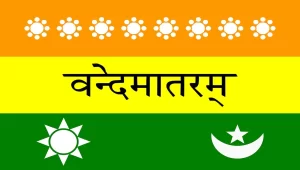
The Berlin committee flag, first raised by Bhikaiji Cama in 1907
In 1907, a similar flag with slight modifications was raised by Madam Bhikaji Cama in Paris. This flag was also exhibited in Berlin at a socialist conference and thus came to be called the Berlin Committee Flag.
The tricolour flag, although very similar, had changed colours, with the green band on top being replaced by a saffron band with the green band shifting at the bottom instead of the red band. The words “Vande Mataram’ stayed with the flag but the 8 white lotuses were replaced by 8 suns/stars, with the sun and crescent moon interchanging their positions on the bottom green band.
3.
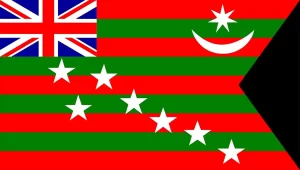
In 1917, as a part of the Home Rule Movement, Annie Besant and Bal Gangadhar Tilak hoisted another flag. The flag signified autonomous rule for Indians within the Colonial Empire.
In 1917, when our political struggle had taken a definite turn, the third flag was raised. During the Home Rule movement, it was raised by Dr. Annie Besant and Lokmanya Tilak. This flag featured seven stars in the saptarishi pattern superimposed on five red and four green horizontal stripes that were positioned alternately. The Union Jack was located in the top left-hand corner. In the right upper corner, there was a white crescent and a star as well.
4.
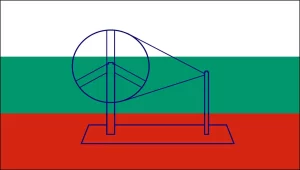
The flag unofficially adopted in 1921
An Andhra teenager, Pingali Venkaiah presented a flag during the All India Congress Committee meeting in Bezwada (now Vijayawada) in 1921 and presented it to Gandhiji. It consisted of the two primary colours,red and green, representing the two major religious groups- Hindus and Muslims. Gandhiji recommended including a white strip to symbolise the remaining India’s communities and a spinning wheel to signify the nation’s progress.
5.
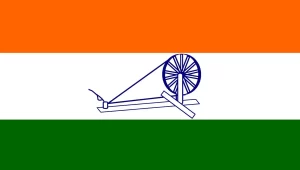
The flag was adopted in 1931. This flag was also the battle ensign of the Indian National Army.
A pivotal year in the history of the flag was 1931. A motion was approved designating the tricolour flag as our country’s flag. This flag, the progenitor of the current one, featured Mahatma Gandhi’s spinning wheel in the middle and was made of saffron, white, and green. However, it was made very clear that it had no communal importance and should be taken as such.
6.
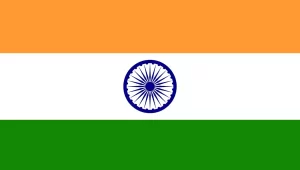
The present National Flag of India, colloquially called the ‘Tiranga’, is a tricolour flag with Saffron at the top, Green at the bottom and White in the middle, with an Ashoke Chakra, a 24 spoke wheel at the centre. It is based on the Swaraj flag, flag of the Indian National Congress designed by Pingali Venkayya.
The National Flag in its present form was adopted on 22 July 1947 by an ad-hoc committee of the Constituent Assembly, headed by Dr. Rajendra Prasad and including Maulana Abul Kalam Azad, Sarojini Naidu, C. Rajagopalachari, K. M. Munshi and B. R. Ambedkar as its members. It was appointed the National Flag for the Dominion of India until the constitution came into effect on 26 January 1950, after which it has served as the National Flag of the Republic of India ever since.
ALSO READ:

